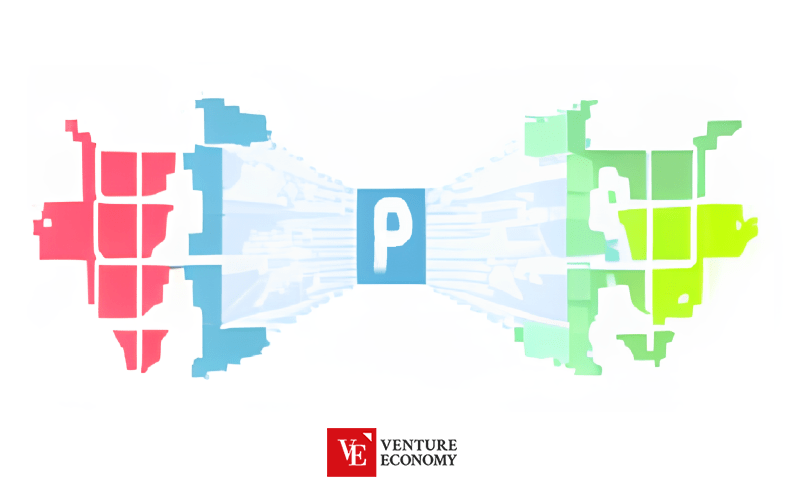[해외 DS] 수학자가 본 ‘더 라인’, “가장 비효율적인 도시 형태, 원형이 더 낫다”
‘더 라인’ 청사진, 수학적으로 문제 있어 선형 구조 때문에 평균 이동 거리·시간 늘어 대부분의 도시가 동그란 데는 다 이유가 있어
[해외DS]는 해외 유수의 데이터 사이언스 전문지들에서 전하는 업계 전문가들의 의견을 담았습니다. 저희 데이터 사이언스 경영 연구소 (MDSA R&D)에서 영어 원문 공개 조건으로 콘텐츠 제휴가 진행 중입니다.

2022년 10월 사우디아라비아 사막에 106마일(약 170km) 길이의 도시를 건설하는 메가 프로젝트 ‘더 라인(the Line)’ 공사가 시작되었다. 인구 약 4만5천 명이 거주하는 버몬트주 벌링턴과 비슷한 13제곱마일(약 1천만 평)의 면적에 900만 명이 거주할 계획이다.
더 라인은 독특한 도시 계획 콘셉트를 가지고 있다. 약 1,600피트(약 500미터) 높이의 고층 빌딩 두 줄이 약 650피트 (약 200미터) 너비로 서로 마주 보고 사막 도시를 벽처럼 에워싸는 형태로 구성될 것이다. 또한 지속 가능한 친환경 도시 설계로 자동차는 길에 돌아다니지 않고 모든 에너지 공급 과정에서 배기가스를 배출하지 않을 전망이다.
이동 효율성 낮아
그러나 오스트리아의 민간 연구기관인 ‘복잡성 과학 허브 빈'(Complexity Science Hub Vienna, CSH)의 연구진인 수학자 라파엘 프리에토-쿠리엘(Rafael Prieto-Curiel)과 물리학자 다니엘 콘도르(Dániel Kondor)는 지난 6월에 ‘npj 도시 지속가능성(Urban Sustainability)’ 온라인 저널에 발표한 논문에서 수학적 관점에서 볼 때 더 라인이 특별히 지속 가능하지 않다고 주장했다. 프리에토-쿠리엘은 CSH의 보도 자료에서 “선은 가장 효율성이 낮은 도시 형태”라고 말했다. 그리고 도시는 일반적으로 둥글다고 덧붙였다.
선형 접근법의 가장 큰 문제점은 거리가 너무 멀다는 점이다. 더 라인 도시에서 무작위로 두 사람을 선택하면 평균적으로 35마일(약 60km) 정도 떨어져 있다고 프리에토-쿠리엘과 콘도르가 분석했다. 그에 반해 남아프리카의 대도시 요하네스버그는 면적이 853제곱마일(더 라인 면적의 약 65배)에 달하지만, 무작위로 선택한 두 사람의 평균 거리는 21마일(약 33 km) 정도밖에 떨어져 있지 않다.

더 라인의 교통 및 이동성 문제를 해결하기 위해 고속철도가 들어설 예정이다. 그러나 이 솔루션이 효과를 발휘하려면 모든 주민이 차 없는 대도시에서 도보 거리 내에 정거장을 이용할 수 있도록 약 86개의 역이 필요하다. 정거장이 많으면 각 여정의 소요 시간이 길어지고 열차가 원하는 고속에 도달하지 못할 수도 있다. 또한 통근자들은 목적지까지 이동하는 데 평균 60분 이상 걸린다는 계산이 나온다.
2차원 도시의 장점
연구자들에 따르면 더 효율적인 해결책은 ‘더 서클’이다. 더 라인에 계획된 고층 빌딩이 원형으로 배치되면 장거리 문제가 해소된다. 더 라인과 같은 면적(13제곱마일)의 원은 지름이 4.1마일에 불과하기 때문이다. 더 서클에서는 무작위로 뽑힌 두 사람 사이의 평균 거리는 1.8마일(더 라인에 비해 19배 짧다) 밖에 안 된다. 이론적으로 모든 것이 도보 거리 내에 있으므로 고속 열차가 전혀 필요하지 않을 것이다. 버스 노선과 자전거 도로 몇 개만 추가하면 충분하다. 프리에토-쿠리엘과 콘도르는 논문에서 둥근 도시 형태가 디자인적인 측면에서는 덜 감각적일 수 있지만 “통근 거리와 교통에 필요한 에너지를 줄일 수 있으므로 더 바람직하다”라고 강조했다.
이러한 이점의 주된 이유는 수학적 관점에서 볼 때 원형은 2차원이고 선은 1차원이기 때문이다. 1차원에서 도달할 수 있는 장소의 수는 사람이 걷고자 하는 거리에 따라 선형적으로 증가하는 반면, 2차원에서는 거리의 제곱에 따라 방문할 수 있는 장소의 숫자가 증가한다.
또한 1차원 구조물은 2차원 구조물보다 훨씬 더 위험하다. 예를 들어 기차역에서 화재가 발생하면 많은 사람이 대부분의 도시 시설로 부터 직접적으로 단절된다.
‘더 라인’을 향한 그의 비판에도 불구하고 프리에토-쿠리엘은 최근 보도 자료에서 도시 형태와 개발에 관한 관심이 시의적절하고 중요하다는 긍정적인 의견을 남겼다. “특히 아프리카의 도시는 많이 성장하고 있습니다”라고 덧붙였다.
In October 2022 construction work began on a megaproject called “the Line,” a 106-mile-long city in the Saudi Arabian desert. The plan is for nine million people to live within a mere 13 square miles—an area comparable to Burlington, Vt., which is home to only about 45,000 inhabitants.
This feat will be achieved through a unique urban planning concept: the Line will consist of two long rows of about 1,600-foot skyscrapers that will face each other at roughly 650 feet, enclosing the desert city like a wall. In addition, urban life will be as sustainable as possible. Cars will have no place in this futuristic city. The entire energy supply will be emission-free.
But in a paper published in June in npj Urban Sustainability, mathematician Rafael Prieto-Curiel and physicist Dániel Kondor, both at the Complexity Science Hub Vienna (CSH), argue that the Line is not particularly sustainable from a mathematical perspective. “A line is the least efficient possible shape of a city,” Prieto-Curiel said in a press release about the research from CSH. He added that, instead, cities are typically round.
The main problem with the linear approach is the huge distances involved. Pick two people at random from the planned city, and they will be, on average, 35 miles apart, Prieto-Curiel and Kondor calculate. By way of comparison, consider the South African metropolis of Johannesburg. Its greater metropolitan area has a similar number of inhabitants as the Line will in the future but spreads over 853 square miles. In Johannesburg, two people are only about 21 miles apart on average.
High-speed rail is intended to solve transport and mobility issues in the Line. But for this solution to work, the city will need around 86 stations so that every inhabitant has a stop within walking distance in this car-free metropolis. The many stops will increase the duration of each journey—and prevent trains from reaching the desired high speeds. In addition, a commuter will spend more than 60 minutes traveling to their destination on average, Prieto-Curiel and Kondor calculate.
THE ADVANTAGE OF TWO-DIMENSIONAL CITIES
According to the researchers, a more efficient solution is obvious: “the Circle.” If the skyscrapers planned in the Line were arranged in the round, that would solve the problems of long distances. A circle with the same area as the Line (13 square miles) has a diameter of merely 4.1 miles.
The average distance between two people picked at random would then be just 1.8 miles. A high-speed train would not be necessary at all because theoretically everything would be within walking distance. A few additional bus lines and bicycle routes would suffice. The round city shape would be less sensational from a design perspective but more “desirable since it reduces commuting distances and the energy required for transport,” Prieto-Curiel and Kondor write in their paper.
The main reason for this advantage is that, from a mathematical perspective, a circular area is two-dimensional, while a line is one-dimensional. In one dimension, the number of reachable places scales linearly with the distance a person is willing to walk. In two dimensions, the number increases with the square of the distance.
Furthermore, one-dimensional structures are much more vulnerable than those in higher dimensions. For instance, if a fire breaks out in a train station in the Line, many people will be directly cut off from much of the city.
Amid his and Kondor’s critiques, Prieto-Curiel offered one positive note in the recent press release: attention to urban form and development is timely and important, he said. “Cities, especially in Africa, are growing,” Prieto-Curiel added.



























